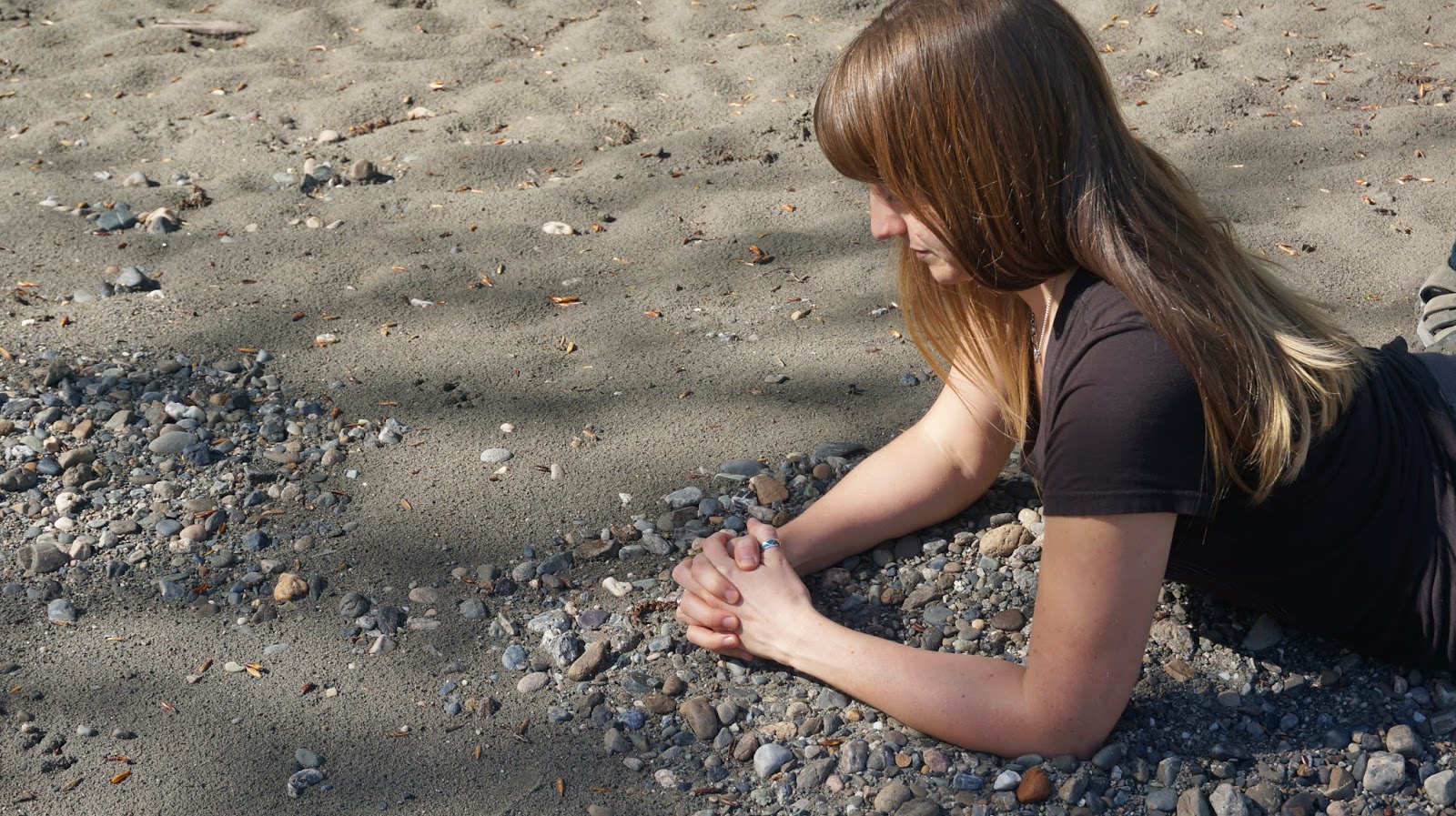What is happening in Sphinx pose?
Practicing Sphinx causes stimulation of the sacral-lumbar arch. The spine is supported at the base by the sacrum and the sacrum by the ilium. The sacroiliac joint is where they meet. The sacroiliac joints contain many ligaments(connective tissues) that are effected by hormonal changes especially in women. You might feel its effect at the beginning of a menstrual cycle, during pregnancy, and lactation. The hormones released in the female body are responsible for relaxing the ligaments in this joint and it can become overly mobile.
In Sphinx muscles in the shoulders and upper back and neck are contracting so there won't be complete release. The area that we are focusing on releasing is in the low spine and hips.
Props
If you can't feel comfortable without clenching try some of the props. Also the shoulders might become tired so put a bolster under the armpits and take some strain off of the shoulders and the upper back softens. Or try changing the position of the arms and hands. You may use a block to rest the weight of the head on, or bring the hands to chin. To feel the compression move into the low spine take the elbows more forward. You can also create a stronger sensation by using a blanket under the elbows, making the shoulders taller doing so also creates space in the back. (all are pictured below)

 |
| Take the weight of your head out of the equation. |
This pose is nice for pregnant OR robust folks as well. Place a bolster under the hips or upper thighs and blocks under the elbows. We just created space for a belly using props.
 |
| Preggers |























